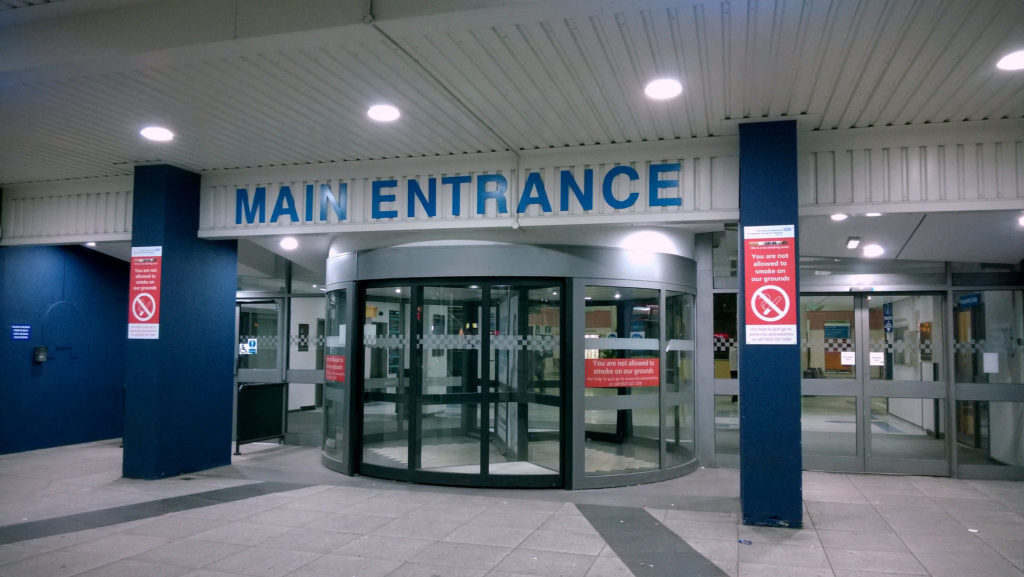Getting patients to comply with care instructions, whether following a specific diet plan or taking medications at the right time, is one of the biggest challenges for the home health industry. It’s also one of the leading causes of hospital readmissions and an issue that innovative startup businesses are taking on.
Health Recovery Solutions (HRS) is one startup tackling that issue, and it’s already seeing some great results after teaming up with HomeHealth Visiting Nurses of Southern Maine (HHVN), the largest home health care provider in Southern Maine. HRS’ system works off a tablet, which patients use to track their own health, work face-to-face with nursing staff and inform family members of their status with mobile app check-ins.
Since implementing the Patient Connect Platform software and outfitting 474 of HHVN’s high-risk patients with tablets in 2015, readmission rates have plummeted 75% to just 4.2% of this patient group as of April 2016. The state readmission average in Maine, by comparison, is 16.6%, according to HRS.
“We’re really impressed from the results, because with the patients who are on our program, they’re the frailest with really advanced chronic diseases,” Mia Millefoglie, vice president of development and marketing at HHVN, told Home Health Care News.
HHVN has utilized telehealth since 2002, but have experienced better results over the last six from using virtual video components with patients, according to Millefoglie.
“[Our specialist] can really look and do more of an assessment,” Millefoglie said. “It’s live and virtual, and they can make more recommendations, contact the doctor and do interventions more quickly and accurately. It’s essentially a HIPAA compliance Skype visit by a specialty nurse who is right there.”
While HHVN has been able to get seniors and home health staff to implement new technology to drive better health outcomes, the industry at large faces headwinds when it comes to tech adoption and how seniors use health and wellness apps.
“What we focus on is how do we engage patients so that they stay out of the hospital,” HRS CEO and Founder Jarrett Bauer told Home Health Care News. “We want the patient to be more proactive in their life. They are the ones who answering reminders, tracking their daily activity and seeing what their trends have been.”
The system works when patients engage with it, and HHVN patients spent an average of 24.6 minutes daily engaging with the tablet over the last year, the data revealed. Patients watch educational videos, track their daily activity and answer survey questions about their health and experience. The use of the tablet can update care teams about a patient’s current condition, which can catch health changes sooner and potentially eliminate a trip to the hospital.
“When we see that the average engagement is [over] 24 minutes per day, that’s exciting,” Jarrett Bauer told HHCN. “Over a month, that’s 12 hours of education someone received or 12 hours of nursing that they normally wouldn’t have.”
Over the last six months, the readmission rates continued to improve for HHVN’s patient groups. Among its congestive heart failure and chronic obstructive pulmonary disease patents, readmissions fell to 2% and 1%, respectively. Readmission rates for diabetes patients dropped to 3.3%.
HHVN’s dramatic results might be an indication that more seniors are willing to engage with technology and take more responsibility in their own health care plans at home. That could spell good news for top corporate venture capitalists (CVCs) that have recently begun setting their sights on innovative startups within the space.
“We are betting on engagement,” Bauer told HHCN. “We’re betting on software being the answer and the idea that in the future there is going to be more leveraging around the patient with technology and family members.”
As the health system continues to shift toward value-based purchasing and new reimbursement models like bundled payments, technologies that reduce hospital readmissions—and therefore financial penalties—are going to continue to play a bigger role in home health. Getting seniors and nursing staff alike to engage with technology is just one piece of the puzzle.
“The only way to get better is to use technology to think differently,” Bauer said.
Written by Amy Baxter




